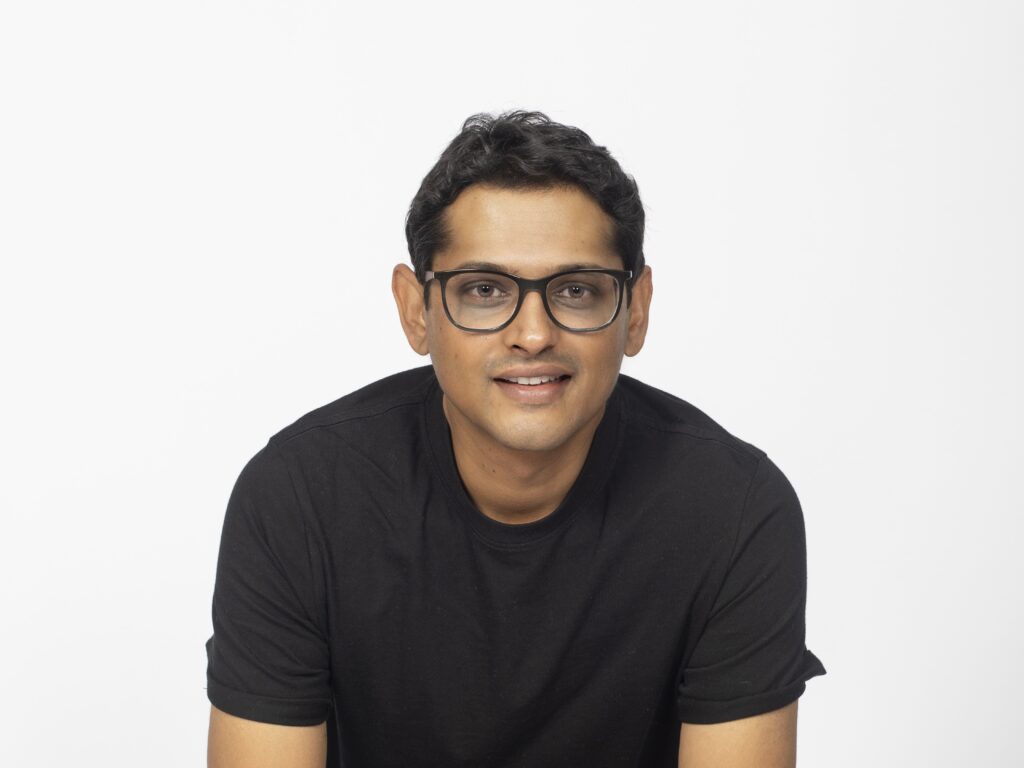The engineer turned chief digital officer has spent the majority of his career problem-solving.
Dhesen Ramsamy, group CDIO at Momentum Metropolitan, is a family man and self-proclaimed music nerd. His favourite genres include folk rock, grunge and reggae music. “If playing guitar badly counts, then I’m a part-time musician too,” he jokes.
Dhesen grew up in Chatsworth, Durban, and studied chemical engineering at the University of KwaZulu-Natal. He says his background in engineering left him with both the propensity and love for problem-solving, which comes in very handy in IT. “You end up feeling engaged by identifying problems and finding solutions,” he says. “Engineering teaches you how to optimise and find routes through significant issues.”
After completing his studies, Dhesen worked for Unilever, where he led product R&D capability for the Africa and Middle East region. “My experience with Unilever left me with a new understanding and obsession for solving for the client and not flogging products,” he says.
Cutting his teeth as an engineer for seven-odd years, Dhesen went on to explore new opportunities in the banking sector. It was perfect timing as the banks were starting to recruit engineers. “I spent my formative years in banking as a process engineer and in customer strategy for Nedbank. So, looking back, I would say that my door into IT was through building and solving client problems,” he continues.
He also formed part of a team that developed the country’s first end-to-end online mortgage application at Nedbank. “This is how I got into the digital and technology field and not the traditional route of coding or infrastructure development. I then found myself in the retail sector with Woolworths Financial Services: they were launching their customer 2020 initiative, a customer-meets-digital roadmap.”
In addition to this colourful resumé, Dhesen spent three years with TymeBank, where he was involved in developing the bank’s digital offerings. The most noticeable project he worked on was TymeBank’s rewards programme in collaboration with Pick n Pay. “The start-up energy I experienced at Tyme was addictive,” he says. “It accelerates client obsession and learnings like nothing else. This is something we have really done well in some areas at Momentum Metropolitan, and we will look to entrench more of that in our business culture.”
Digital bridges the gap between business and IT
He describes himself as an unconventional IT guy because he didn’t come through the traditional IT ranks of coding and other traditional IT disciplines. “I have enormous respect for these disciplines, however,” he adds. He is both business-minded and driven by a digital agenda, wanting to bridge the gap between the two worlds.
“A significant part of my journey at Momentum Metropolitan has been in the digital space. Prior to my current position, I led the digital hub, design and prototyping for the group,” he says. When Momentum Metropolitan made the decision to advance their digital transformation ambitions, he was the first person to put up his hand to accelerate the agenda: “You find me at a very interesting juncture in my new role with the insurer, because I am nearing my first 90 days in the CDIO position.”
Digital transformation adds business value
Business is at the centre of several forces at the moment: on one end there is a consumer movement, the Uberisation of business, as he puts it. “Where consumers expect ease of use or frictionless delivery of a product or service, businesses are feeling the pressure from consumers, but it’s a good opportunity for them to meet those high expectations of service/self-service.
“Financial services is also at the mercy of this rise of digital innovation and technology innovation, namely cloud computing, big data and client use of mobile devices. We must see these technologies as a primary channel of engagement,” he advises.
He goes on to say that if businesses are experiencing these changing forces, then the traditional role of IT also fundamentally changes, and IT leaders need to be at the forefront as strategic and thinking partners rather than an order taker. “IT leaders cannot lean on some of the things that made them successful before: they need to take their seat at the table when client solutions are being discussed and strategy is being tabled,” he says.
“The rise of digital product ownership effectively bridges traditional business and IT roles. What product ownership entails is becoming a dual-digital voice at the table: an IT whisperer to business and a business whisperer to IT – more importantly, someone obsessed with the user experience.”
Dhesen adds that while traditionalist technologists are making the transition he proposes an effective solution: the rise of a digital business leader. “Digital business leaders are people who appreciate both business and the business mechanics, and appreciate the full extent of the value delivery engine to a client or adviser,” he says. “These leaders don't shy away from the technology aspect of the business – they get involved in the technology delivery engine as well.”




